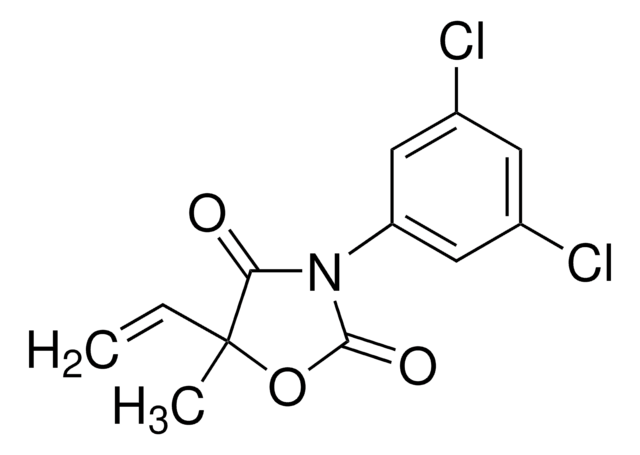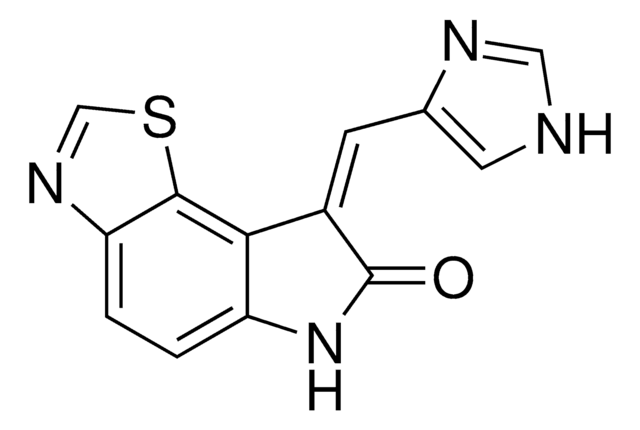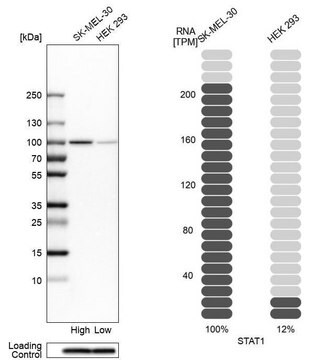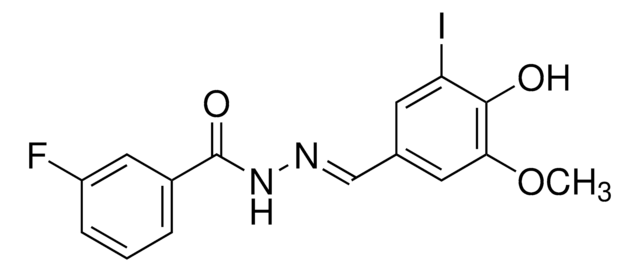C4859
Cycloheximide solution
Ready-Made Solution, microbial, 100 mg/mL in DMSO, Suitable for cell culture
Synonym(s):
CHX
About This Item
biological source
microbial
Quality Level
description
suitable for testing specifications (CHO C. growth inhibitor)
form
solution
concentration
100 mg/mL in DMSO
solubility
DMSO: soluble
antibiotic activity spectrum
fungi
yeast
Mode of action
protein synthesis | interferes
storage temp.
2-8°C
SMILES string
O=C1[C@@]([C@H](O)CC2CC(NC(C2)=O)=O)([H])C[C@@H](C)C[C@@H]1C
InChI
1S/C15H23NO4/c1-8-3-9(2)15(20)11(4-8)12(17)5-10-6-13(18)16-14(19)7-10/h8-12,17H,3-7H2,1-2H3,(H,16,18,19)/t8-,9-,11-,12+/m0/s1
InChI key
YPHMISFOHDHNIV-FSZOTQKASA-N
Gene Information
human ... FKBP1A(2280) , PIN1(5300)
Looking for similar products? Visit Product Comparison Guide
Related Categories
Specificity
Biochem/physiol Actions
Other Notes
Signal Word
Danger
Hazard Statements
Precautionary Statements
Hazard Classifications
Acute Tox. 3 Oral - Aquatic Chronic 3 - Eye Irrit. 2 - Muta. 2 - Repr. 1B - Skin Irrit. 2
Storage Class Code
6.1C - Combustible, acute toxic Cat.3 / toxic compounds or compounds which causing chronic effects
WGK
WGK 3
Flash Point(F)
188.6 °F - closed cup
Flash Point(C)
87 °C - closed cup
Regulatory Listings
Regulatory Listings are mainly provided for chemical products. Only limited information can be provided here for non-chemical products. No entry means none of the components are listed. It is the user’s obligation to ensure the safe and legal use of the product.
EU REACH Annex XVII (Restriction List)
Certificates of Analysis (COA)
Search for Certificates of Analysis (COA) by entering the products Lot/Batch Number. Lot and Batch Numbers can be found on a product’s label following the words ‘Lot’ or ‘Batch’.
Already Own This Product?
Find documentation for the products that you have recently purchased in the Document Library.
Customers Also Viewed
Our team of scientists has experience in all areas of research including Life Science, Material Science, Chemical Synthesis, Chromatography, Analytical and many others.
Contact Technical Service





